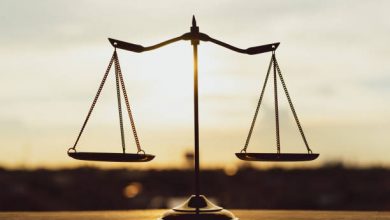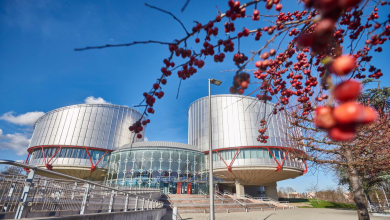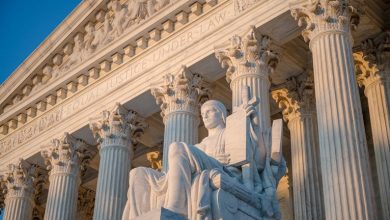V. Rybak. New mechanisms for ensuring the right to a public hearing in Ukraine

High-quality work of the judicial system is the key to the effective functioning of the entire system of government. But what if the judicial system in the country is in the doldrums? What measures can civil society take?
The right to a public hearing is an opportunity to exercise public oversight in order to build confidence in the court, ensure transparency and fair trial and prevent potential abuses during the trial. Ukrainian society has stepped far forward, compared with the basic understanding of Art. 6 of the ECHR, when this right was considered as an opportunity for the public and for the participants in the case to be personally present during the trial. Due to the establishment of successful cooperation with the judicial authorities, the human rights and advocacy community ensured that the court itself broadcasts public court hearings in high-profile, socially important cases on the official websites and You Tube channel.
In connection with a number of political and social upheavals, Ukraine is experiencing very difficult, tragic events, at the same time receiving new opportunities for transformation. At present, the country is implementing judicial reform. The level of public confidence in the judiciary remains one of the lowest among the public authorities – 16% according to the All-Ukrainian citizens’ survey Results of the Second National Survey of the Ukrainian Population Regarding Trust in the Judiciary, Judicial Reform and Perception of Corruption conducted within the frames of the USAID FAIR Justice Project in 2018. However, this figure has increased significantly, for example, compared with 2015, when it was 5%.
One of the reasons for such a negative perception of the courts is the opaqueness of the judicial system. We observe numerous examples of restricting access to public court hearings for the media, trial monitors, the public; restrictions on recording the hearings, including audio recording. At the same time, the representatives of the courts practically did not report anything about their work and the cases either on the information resources of the court or in the comments to the media. Such violations of the right to a public hearing manifested themselves very clearly during the events of the Revolution of Dignity, in 2013-2014, and were documented during trial monitoring. There is also a problem that has not been resolved in many courts to this day – the lack of suitable premises to accommodate a large number of people. This is especially true for high-profile, socially significant lawsuits.
Traditionally, litigations are mostly covered by the media. But when, on the one hand, there is a lack of complete information, which is presented without the court’s position, and on the other hand, the media rather often misinterpret the court proceedings. This contributes to the dissemination of false information, speculation, forms a negative perception of the court, the prosecutor’s office and provokes outrage among citizens, including protests and disruptions in court hearings.
At the same time, after the Revolution of Dignity, there was a very high demand for fair justice in society. The first lawsuits began to bring former law enforcement and other government officials to justice. These processes caused a strong public outcry. People tried to get to public hearings in the courtroom and needed constant information about them.
The analysis of the handling of court cases related to the events of the Revolution of Dignity showed an inadequate level of their publicity along with accessibility. For example, not only activists, the media, but also the participants of the trial could not get to court hearings, because their total number in one of the cases as of 2015 exceeded 220 people. In April of the same year, at the meeting with the Head of the Council of Judges of Ukraine, human rights activists, lawyers, me, as a representative of the NGO and the author of the monitoring report, it was proposed to organize the broadcast of trials in this case at least to the neighboring courtrooms in order to increase the number of people, in particular journalists who could monitor the trial in real time. We also offered to use the cameras that had already been installed in the courts to carry out videoconferencing during trials. In Ukraine, the law does not provide for the possibility to conduct mobile courts, while clearly establishing the rules of jurisdiction, so the option to transfer the consideration of the cases with such a number of participants to another court or larger premises was out of question.
Both lawyers and representatives of the judiciary supported this idea. As a result of joint work, the hearings in this case began to be broadcast not only to the neighboring courtroom, but first to the court in another city where the largest number of victims lived, and then to YouTube network.
Today, the courts throughout Ukraine, except for two regions and the occupied territories, have already begun to use trial broadcasts by court technical facilities, which is more than 1,300 hearings in 190 cases of different types of lawsuits.
It is significant that a large number of such broadcasts were initiated by the court itself.
The Ukrainian legislation provides that broadcasts may be conducted with the permission of the court. For the first time, trial broadcasts by court technical facilities were recorded in 2016 in a special letter from the State Judicial Administration of Ukraine to the chairmen of the courts of first instance, the appeals instance and the heads of territorial departments of the State Judicial Administration. The letter provided that such a broadcast on the official YouTube channel of the judicial authority of Ukraine was carried out when considering cases of considerable public and media interest. An innovation in 2017 was the introduction of a provision to the Civil and Economic Procedure Codes and the Code of Administrative Court Procedure that if all parties to the case participate in the court hearing via videoconference, the trial will be broadcast on the Internet on a mandatory basis.
Important features of the described broadcasts are that the hearings can be simultaneously viewed by an unlimited circle of people. All videos are available for viewing after the completion of the broadcast. This creates favorable conditions for the analysis of trials both for representatives of the judicial system, and parties in cases, the media, the public and other interested parties, for example, representatives of national and international monitoring groups, missions.
During the discussion of this mechanism, various issues are often raised, for example, the interrogation of witnesses, when via the broadcast, they share information. But is it just about the broadcast? Now there are many types of instant data transmission, starting with SMS. In Ukraine, not a single complaint was recorded, when the broadcast had a negative impact on the consideration of the case. Also, the judges should constantly assess the necessity and proportionality of the use of broadcasts. Instead of a ban on trial broadcast, a way out can be found, in particular, in changing approaches to the interrogation of witnesses. Broadcast can bring significant benefits to the lawsuit.
Thus, the use of trial broadcasts creates the conditions for obtaining the following positive results both for society and for the judicial system: increasing the level of accessibility and openness of courts; increased confidence in the courts and the judiciary as a whole; promoting judicial reform; reducing the risk of violations of the right to a fair trial during court hearings; simplification of the process of preparing for a trial for the parties to court proceedings, and therefore, improving their quality; lowering the “degree of conflict” during trials; improving the quality of the media coverage; partial solution of the problem of the lack of a sufficient number of seats for the public in the premises of the courtrooms; the court will receive evidence of its quality work (if any), to which it is possible to appeal both in communication with the public and in the performance of official checks or investigations.
Studying the practice of using trial broadcasts and judicial practice with their help may be useful for other states, first of all, for those that are going through certain transformational processes.
Human rights are a living mechanism that, based on the principles laid down, can be transformed and respond to current challenges and needs. The states, while observing the stipulated minimum, can raise the bar in national legislation and practice to ensure the rights of citizens. Such changes are important and possible.
Valeriia Rybak yra nevyriausybinės organizacijos Ukrainoje Human Rights Vector vadovė





